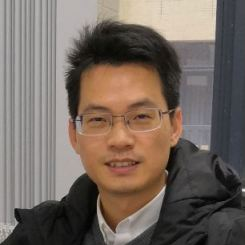Featured Papers in Electrochemistry and Electrocatalysis in China
A special issue of Catalysts (ISSN 2073-4344). This special issue belongs to the section "Electrocatalysis".
Deadline for manuscript submissions: closed (20 September 2023) | Viewed by 5653
Special Issue Editors
Interests: electrochemistry; electrocatalyst; metal ion batteries; material design; reaction kinetics
Special Issue Information
Dear Colleagues,
The vision of reaching "carbon peaking and carbon neutrality" has been regarded as one of the most pressing global concerns, and efficient energy conversion and storage technology is a key technology to achieve a breakthrough in carbon-neutral technologies, such as batteries, capacitors, electrocatalysis, etc. To this end, this Special Issue, entitled “Featured Papers in Electrochemistry and Electrocatalysis in China”, aims to highlight the recent progress and development in design and characterization of traditional and innovative materials and new insights into these materials in energy storage and conversion.
The detailed research areas include the following:
- Developing energy conversion and storage systems with high energy density, high power density, high stability and high safety.
- Design, preparation and application of electrocatalysts with high activity, high selectivity and long lifetime for specific reactions.
- New concepts and insights into energy storage or conversion mechanisms for electrochemistry and electrocatalysis.
The research works as well as review articles focusing on electrochemistry and electrocatalysis are especially welcomed. We hope this Special Issue will popularize the applications of electrochemistry and electrocatalysis techniques in energy conversion and storage studies and furnish important inspiration to researchers for the rational design of the new generation of energy conversion and storage materials.
Prof. Dr. Yuxin Tang
Prof. Dr. Jianping Yang
Guest Editors
Manuscript Submission Information
Manuscripts should be submitted online at www.mdpi.com by registering and logging in to this website. Once you are registered, click here to go to the submission form. Manuscripts can be submitted until the deadline. All submissions that pass pre-check are peer-reviewed. Accepted papers will be published continuously in the journal (as soon as accepted) and will be listed together on the special issue website. Research articles, review articles as well as short communications are invited. For planned papers, a title and short abstract (about 100 words) can be sent to the Editorial Office for announcement on this website.
Submitted manuscripts should not have been published previously, nor be under consideration for publication elsewhere (except conference proceedings papers). All manuscripts are thoroughly refereed through a single-blind peer-review process. A guide for authors and other relevant information for submission of manuscripts is available on the Instructions for Authors page. Catalysts is an international peer-reviewed open access monthly journal published by MDPI.
Please visit the Instructions for Authors page before submitting a manuscript. The Article Processing Charge (APC) for publication in this open access journal is 2200 CHF (Swiss Francs). Submitted papers should be well formatted and use good English. Authors may use MDPI's English editing service prior to publication or during author revisions.
Keywords
- energy storage and conversion
- batteries
- electrocatalysis
- materials
- electrochemistry
Benefits of Publishing in a Special Issue
- Ease of navigation: Grouping papers by topic helps scholars navigate broad scope journals more efficiently.
- Greater discoverability: Special Issues support the reach and impact of scientific research. Articles in Special Issues are more discoverable and cited more frequently.
- Expansion of research network: Special Issues facilitate connections among authors, fostering scientific collaborations.
- External promotion: Articles in Special Issues are often promoted through the journal's social media, increasing their visibility.
- Reprint: MDPI Books provides the opportunity to republish successful Special Issues in book format, both online and in print.
Further information on MDPI's Special Issue policies can be found here.






